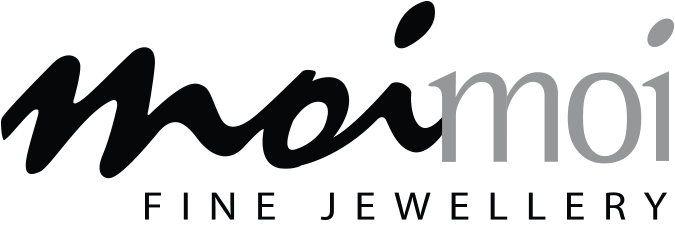There are two distinct and easy things to look out for if you want to tell the difference: double refraction and polished girdle. First, you need to use a loupe (jeweller’s magnification).
Double Refraction:
Look through the crown of the jewel towards the pavilion of the stone with a loupe. You will see a double refraction like the image below. You do not see these ‘train-track’ looking lines with diamonds.
Polished Girdle:
The girdle (or the rim of the jewel) is polished or smooth in Moissanite. You will see a faceted girdle like the picture below which shows a diamond’s girdle at 40x magnification.
These are the two most effective and accurate ways to tell the difference between Moissanite and diamond.
We will be happy to show you if you don’t have access to a loupe or high magnification when dropping into one of our stores anytime –
Moi Moi on Channel 9’s TODAY Show
Take a look at this recent video on The TODAY show, comparing one-carat rings set in 18k white gold. One is a SUPERNOVA Moissanite ring which costs $1,900, the other is a $11,000 Diamond ring. Can you tell the difference?
Even experts sometimes confuse Moissanite for diamond
Moissanite commonly gets mistaken for diamond. A lot of people don’t know about jewellery and even some experts can confuse Moissanite for diamond.
We custom-made a ring for a client down in Melbourne last year which cost $2,500. Our client could not believe it when they took it to their local gemmologist and valuer when it came back valued at $28,000! The expert thought our Moissanite ring was a diamond. That is how amazing Moissanite is!
The National Council of Jewellery Valuers invited us to further educate their members on how to distinguish Moissanite from diamond. As well as how Moissanite has improved in quality over the years.
Moissanite was quite yellow was first released.
We can produce far better quality Moissanite than ever before with huge advancements in technology.
SUPERNOVA Moissanite is by far the most desirable and natural-looking Moissanite available.
SUPERNOVA Moissanite has zero fluorescence and no blue tint in sunlight. It looks like a high-quality diamond.
Origins of Moissanite
Moissanite is undoubtedly the best diamond alternative available. It is a jewel in its own right.
It is so extremely rare you can only find minuscule quantities in a 50,000-year-old meteorite crater site in the Diablo Canyon, Arizona. Moissanite is made from the natural mineral Silicon Carbide. These minuscule quantities were discovered in the late 1800’s by Dr Henri Moissan. It was later named Moissanite in his honour.
We now use heat and pressure in a lab, using the same natural mineral – Silicon Carbide, to produce beautiful gem-quality pieces because Moissanite is too rare for jewellery purposes. All Moissanite stones are hand cut just like diamonds.
Moissanite is a very similar mineral but they have different qualities while Diamond is made of Carbon. Moissanite will test as a diamond if you use a diamond tester. No other jewel other than a diamond will test as a diamond-like a Moissanite does. Make sure it has certification when you purchase any diamond or you could simply buy a Moissanite.
It sparkles just as much as a diamond, in fact, more, just look at the GIA results. It costs a fraction of a diamond of the same size and quality and I promise it will last forever. You can wear Moissanite the same way you would any diamond.
 Track Your Order
Track Your Order


